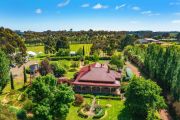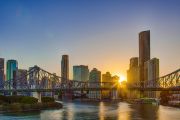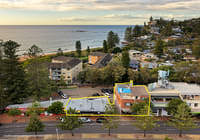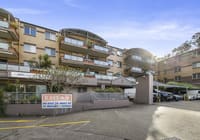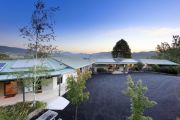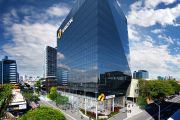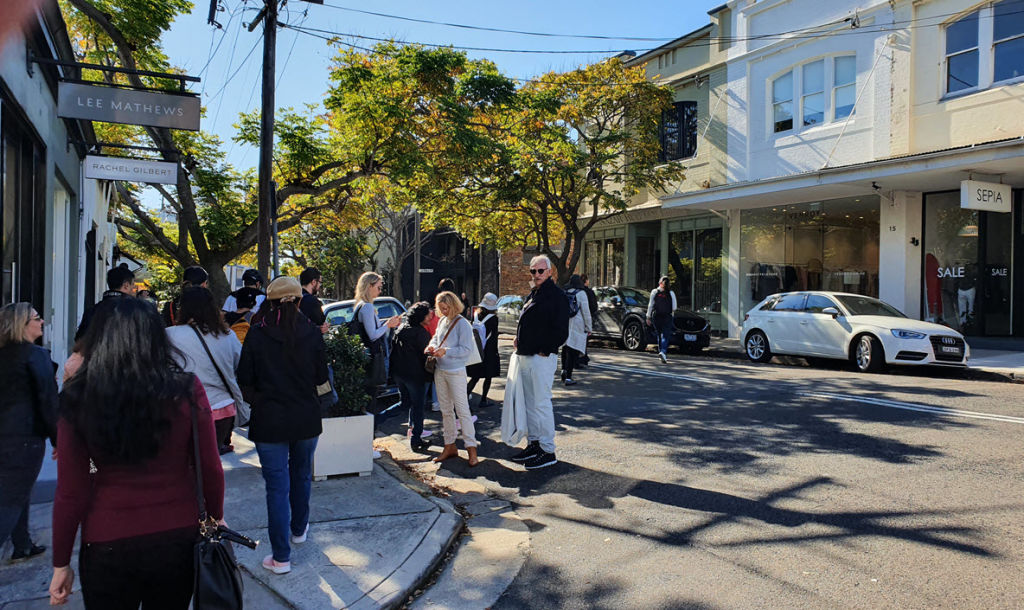
Coronavirus crisis will reshape how we work and shop, says developer Theo Onisforou
It’s Saturday afternoon in Sydney and one collection of retail stores is absolutely mobbed.
Cars are double-parked waiting for spaces and the pavement is teeming with shoppers. In a COVID-19 world, where online buying has become king, this set of bricks-and-mortar rivals is fighting back. And hard.
“We’ve been very busy since we re-opened in May,” said a store manager of one of the Australian brands that moved to The Intersection shopping precinct in Paddington a year and a half ago.
“We were one of the first stores to open again here and, as the other stores opened too, it’s become busier and busier.”
On the other side of the road, it’s hectic inside Australian fashion designer boutique Lee Mathews.
There, manager Julie Song is rushed off her feet. “For the first couple of weeks when we opened again, we were getting smashed,” she said. “But it’s good. After we were closed for so long, we really needed to make some money.”
The Intersection, a zone made up exclusively of Australian brands and boutiques on strips along Glenmore Road coming off Oxford Street, was the brainchild of property developer Theo Onisforou, who hails the model as the future of retail.
He’s convinced that big shopping malls are on their way out in Australia, a country where the climate favours outdoor shopping, particularly post-COVID-19 pandemic.
“Sydney, for instance, is a city to be enjoyed outdoors,” said Mr Onisforou, whose Angus Property has a large portfolio of developments, including retail, office and residential.
“I enjoy the shopping mall mentality in London where it can be cold for 10 months of the year, or in cities in North America or Dubai where it can be so hot. But Sydney has such a delightful climate and, now with coronavirus, people don’t want to be in cavernous airconditioned spaces with lots of others they don’t know. It’s healthier to be out in the fresh air and sunlight.”
He believes we may now see the resurgence of good high street shopping, and particularly in precincts that offer something different or unique.
In Sydney, that could be The Intersection in Paddington, for instance, which is all Australian designers, including Zimmermann, Scanlan Theodore, Camilla and Marc, Alice McCall, Camilla, Bassike, Ginger and Smart and Ksubi, or the dining precinct of Darlinghurst’s Crown Street.
Similarly, other Australian fashion centres, like James Street in Brisbane, are doing well, as is High Street in Armidale, NSW, says Mr Onisforou.
In office real estate, we’re now seeing a similar decentralisation and dispersal, he says, away from our main CBDs. The pandemic has forced most people to work from home, and many have enjoyed the freedom from the daily commute to the centre of cities. As a result, work life may never be the same again.
“I believe that wellbeing has to be our number-one priority,” said Mr Onisforou.
“People are now re-assessing where they want to be, and that’s not so much any more travelling to the CBD every day to work in a tall tower where you can’t open the windows and you’re overshadowed by other tall towers.
“People will want to work closer to home, and in buildings where they can feel the sun on their face, or on their back, and can open windows to let in fresh air. I think it’s been happening for a while, and the CBD was already past its zenith, but COVID has accelerated the trend.”
Mr Onisforou, a former financial advisor to the late billionaire Kerry Packer, has invested in Sydney’s Green Square, the $13 billion urban renewal site and new town centre and housing precinct 3.5 kilometres from the CBD, which is forecast to have 61,000 residents by 2030.
He’s just lodged a stage-two development application for a $120 million office building that he says will be the first major A-grade office project in the area. The plans have been revised to be an example of good post-COVID-19 pandemic design: north-facing with plenty of sunlight, openable windows, touch-free automatic doors, high-speed lifts and a hygiene station on entry.
Designed by Chenchow Little Architects on an old warehouse site at 290-294 Botany Road, it will span 10,000 square metres over seven storeys close to Green Square Station and the planned Waterloo Metro. It will have a 5.5-star NABERS rating on completion.
“Green Square will be the most densely populated part of Australia, and there’ll be more than 60,000 people and not one office building – except for hopefully mine,” Mr Onisforou said. “It makes sense to build in a place close to where so many people are living.
“And for tenants who might be paying $11,000 per square metre for 15,000 square metres in the CBD, and looking to downsize to 10,000 square metres, that could be a rent saving of over $8.8 million a year. I’m competing with the CBD and telling tenants they can save tens of millions of dollars over a five-year lease by moving to Green Square, instead of being in a building that would be so expensive to retro-fit post-COVID. People need to grab the bull by the horns.”
When the new Waterloo Metro is finished, it’ll be just a two-minute ride to Central Station and six minutes to Martin Place, with trains every five minutes.
